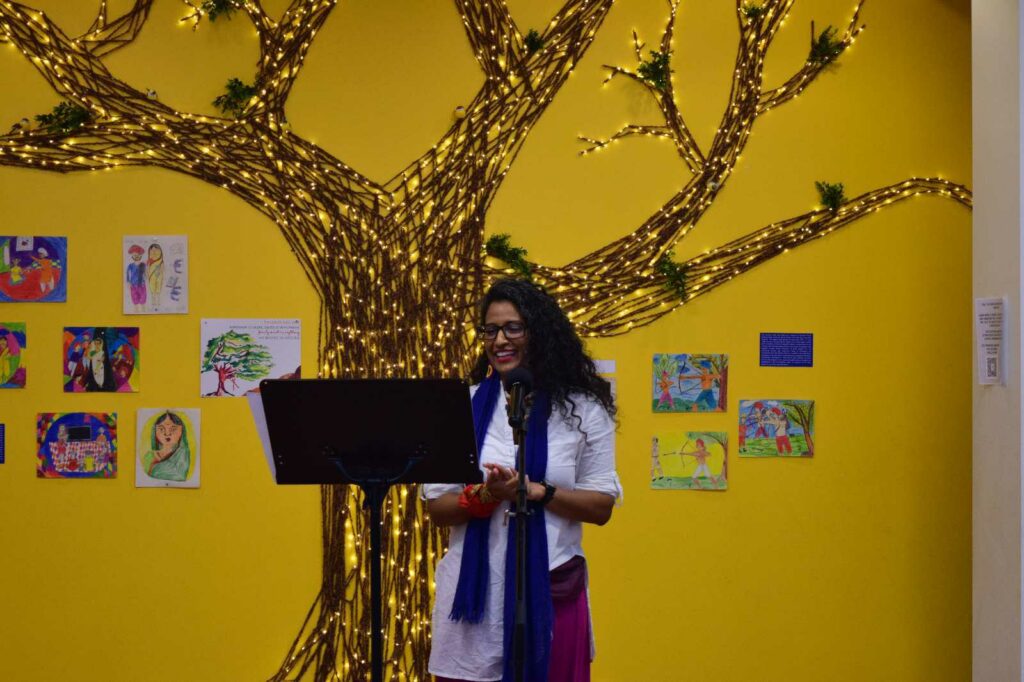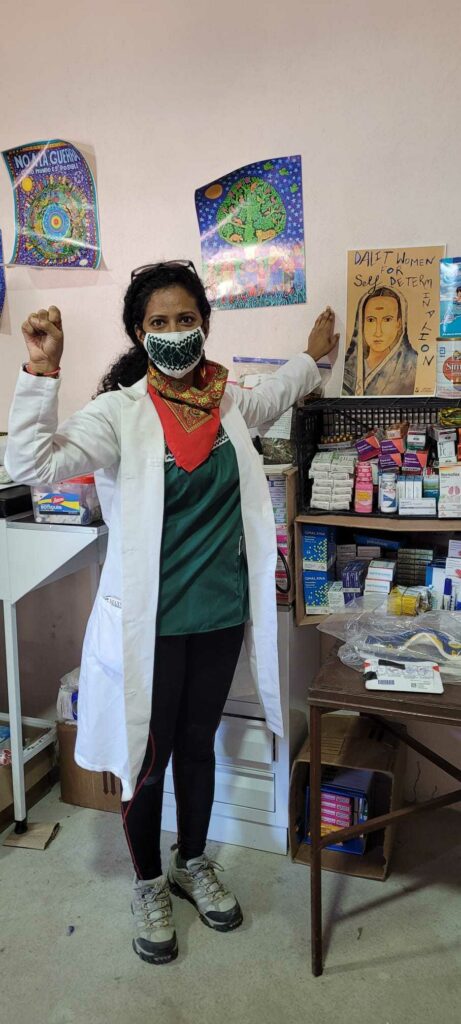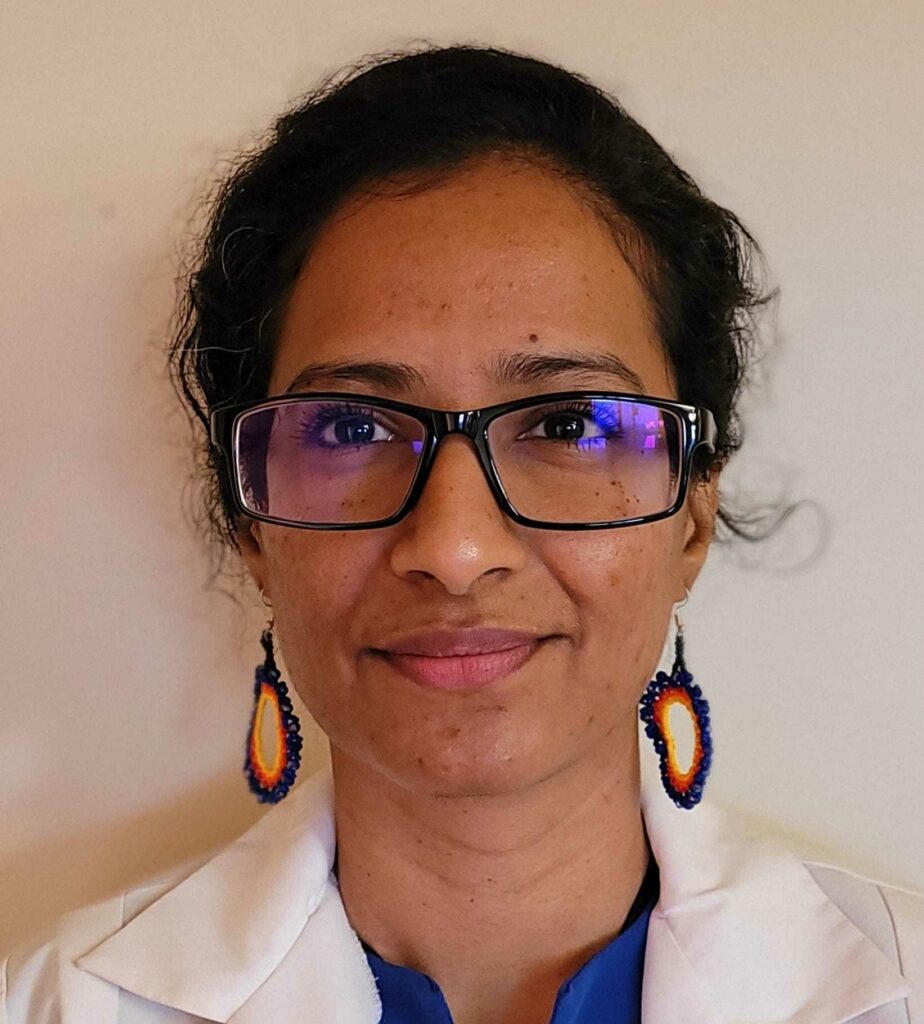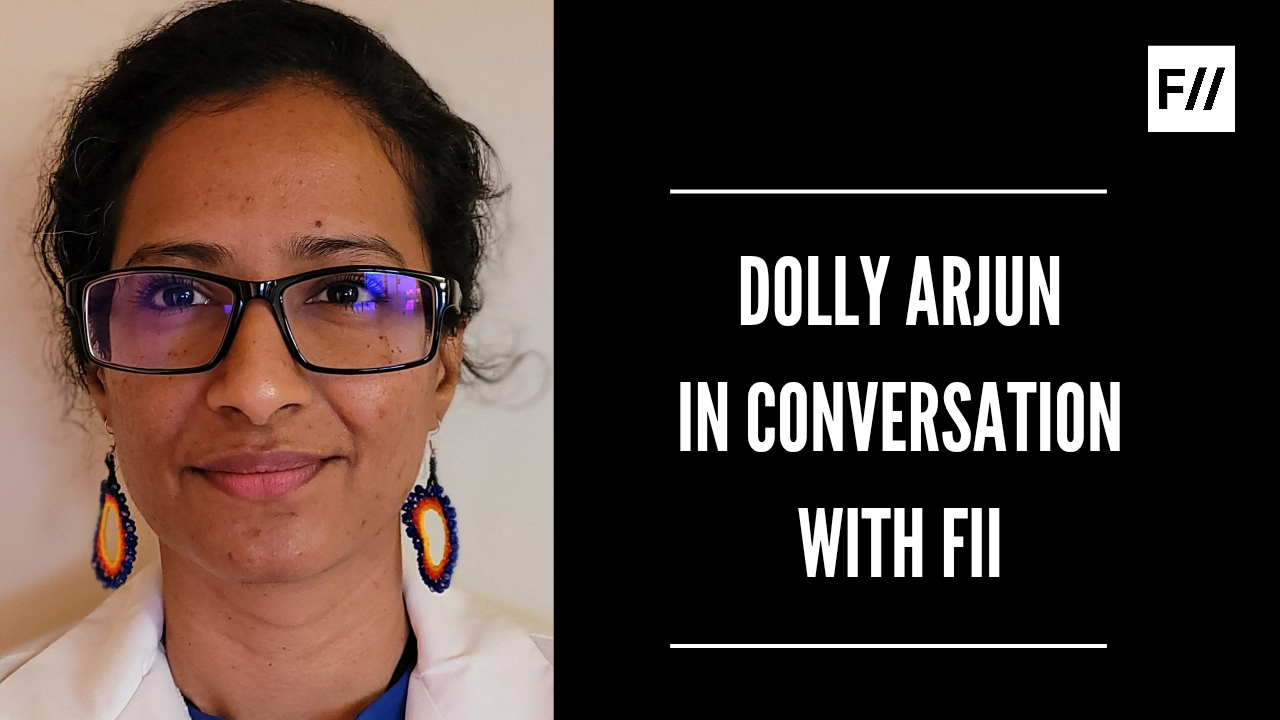On 21st February 2023, the Seattle council approved an ordinance, that turned out to be a historic win, with Seattle becoming the first city in the US to include caste in the anti-discrimination policy. The law will now help the Dalit community in the US fight against caste discrimination, in working spaces, employment, housing and public accommodation.
South Asian communities continue to practice caste in different forms all over the world- from micro-aggression to violent-oppressive attacks on minorities. In this context, FII speaks to the renowned activist, public health provider and art curator based in Boston, Massachusetts. She is a current member of the Ambedkar International Center. She was born in Hyderabad where her grandfather was a prominent Dalit activist and was raised in the Bay Area and Oakland, California.
“If you think about the way Brahmins have accumulated power and status intergenerationally, the kind of social networks, economic power, and cultural power that they’ve ascertained in the diaspora, like from a medical point of view, for instance, they are oftentimes the heads of international medical organisations, they are there in the WHO, they’re in the UN, they’re in organisations that are working in Haiti via the US and so on. It’s the Mukherjees and the Trivedis and so forth.”
Dolly Arjun
Dolly Arjun is a public health provider, art curator and activist based in Boston, Massachusetts. She is a current member of the Ambedkar International Center. Born in Hyderabad, she was raised in the Bay Area and Oakland, California. Dolly is a social worker working with immigrant survivors of domestic and political violence providing legal, mental, and emotional advocacy. Throughout the pandemic, she worked at various field hospitals in Boston while simultaneously leading the only healthcare organisation providing healthcare focused on rural caste-oppressed communities. She mentors Dalit students studying in various backgrounds and runs an art collective, Adavi Myah.
FII in conversation with the public health worker and activist, Dolly Arjun, on the historic Seattle legislation and the need for resisting caste in the USA.

FII: Seattle has marked a historic-monumental win against caste oppression. How relevant and important is this at a time when India and other South Asian countries still continue caste-based practices and oppression?
Dolly: I do think it’s huge because, in the US diaspora, we end up being pushed aside as some kind of fringe radicals or our conversations are seen as unnecessary because the majority of South Asians in the diaspora are Savarna. Savarnas did a great job of transporting this idea of mainstream Indian culture which is really Savarna culture and Savarnas represent a minority of Indians. This is stuff like yoga, vegetarian food, Gandhi, Diwali, and Holi, and some of these things are starting to become parts of cultural things for Americans as well. But these conversations have been devoid of caste.
So I think that having this ordinance passed, which specifically deals with caste discrimination is huge because now if I’m to talk about casteism among dominant caste circles, whether it’s in the medical circles where I work or among a group of artist friends or whatever it is, it cannot be any more like, ‘Oh Dolly is the Dalit person, so she’s bringing up caste or she’s angry about caste’, now it kind of sets the precedence where look, there are so many people talking about it and so many people that are impacted by it that there’s actually an ordinance passed in the US. Oftentimes, I have felt gaslighted into thinking that the US is some post-caste world and it gets exhausting but the fact that there’s this legal precedence here, gives me a reference point to feel just more supported kind of, like, I imagine this invisible community behind me, kind of uplifting what I am talking about.
“There are volumes written about the way caste discrimination affects oppressed caste women’s bodies so to say briefly that the community is not just ignored by the state but also by the nation because it’s so commonplace and that violence is part of the system works. If a person is considered untouchable by a religious, social, and moral code and thus not even considered an equal human being, then there is no crime too atrocious.”
Dolly Arjun
So I do think it’s a huge deal and I do think it’s going to be kind of a turning point like, we are going to look back at this as having been a turning point in the future. Especially with the US being a hegemonic power holder, I think that when things happen here, they tend to leave a mark on other places in the world, right? So this has already become an international precedent with a similar ordinance passed in Toronto now. This, of course, sets off major red flags among the Sanghi circles all the way back to India because there is international pressure to deal with the caste issue.

So I think it’s going to reverberate for quite some time through the years, it’s going to become quite important. In terms of the immediate effects, it hopefully gives some caste-oppressed people an opportunity to live more freely and gives them a space where they might have some legal repercussions if they were being harassed either psychologically or otherwise.
FII: Marginalised women communities in India have been through extreme political violence- from harassment in colleges to brutal rape-murders like the Hathras incident, which are deliberately ignored by the state. Isn’t this structural violence based on identity, especially the caste and gender equation?
Dolly: Right, there are volumes written about the way caste discrimination affects oppressed caste women’s bodies so to say briefly that the community is not just ignored by the state but also by the nation because it’s so commonplace and that violence is part of the system works. If a person is considered untouchable by a religious, social, and moral code and thus not even considered an equal human being, then there is no crime too atrocious.
The natural consequence for it to be legally enforced is through the impunity of perpetrators. It is only because of the courage of the families that we get to know about instances such as the Hathras case, but under no circumstances do I think this type of violence is as rare as we see it mentioned in the mainstream.
FII: As you might know, the number of Dalit students who are victims of institutional murder is not less in number including the recent death of Darshan Solanki at IIT Bombay. There have been rising protests against this violence and huge victories like Brown University adding caste to the non-discrimination policy. In this context, how do you place the function of caste in the South Asian diaspora (Hindu, Muslim, Christain, etc.) in academic spaces/tech fields/other working spaces (choose as per your area) in the US? Would you like to share any instances or personal experiences?
Dolly: Certainly occupation and caste are very interrelated. But I also think caste is such a genius oppressive system that it touches upon every aspect of our being, right? It’s spiritual, political, occupational, it’s economic, so, you know, caste also cuts across all religions in the South Asian context. And that means we have casteism carried over into the diaspora. Anyone of South Asian descent of any religion is generally going to carry caste and casteist ideas with them. So this question about the impact of caste or what personal things you face is difficult to answer. It’s hard to verbalize and I don’t think I have the right language around this.
“When a dominant gender or race or caste is not used to seeing that type of resistance, and when they are expecting complicity, it’s a “normal” reaction. There’s an adjustment period required and then hopefully they have the capacity to introspect.”
Dolly Arjun
Some obvious impact is the lack of social networks. And these networks determine who we marry, where we work, how much we make and so forth. The social network piece is itself kind of crushing and it’s also difficult to holistically outline. I immigrated here with my parents in the 80s. And at that time, you just could not even speak at all about who you were as a caste-oppressed person but still, people could sniff you out with a few simple questions about my parent’s education level, food practices, and so on. My dad always wanted to be a lawyer but he died having gotten only so far as driving the car of a Savarna lawyer, in the US!
As I’ve seen more folks from the community migrate here, it’s been really helpful to hear their narrative. Some things are more straightforward like the discrimination faced at work, comments that are made, or exclusionary social practices. For instance, If you do a search in any major city in the US there are Facebook Kamma groups and Brahmin groups etc. You know, a lot of folks from the community also have a lot of internalized shame. And that creates a lot of mental health impact, which impacts our family life.
A lot of it is also just coded in cultural practices like food habits, or hair texture, and so it’s hard to express because it’s a constant game of being excluded based on different factors. All that to say that there are many parts of caste that present themselves here that become invisible because we don’t yet have the language or are not able to verbalise it yet or the effects of it are intergenerational and cumulative. So it’s kind of difficult to talk about exactly how it manifests.
Also Read: On Hathras, Bilikis Bano And The Injustice To Marginalised Women
On the flip side, I might use the examples of Brahmins. I work in medicine. If you think about the way Brahmins have accumulated power and status intergenerationally, the kind of social networks, economic power, and cultural power that they’ve ascertained in the diaspora, like from a medical point of view, for instance, they are oftentimes the heads of international medical organisations, they are there in the WHO, they’re in the UN, they’re in organisations that are working in Haiti via the US and so on. It’s the Mukherjees and the Trivedis and so forth. They set a narrative of being a model minority who are dedicated to providing care for the most marginalised around the world. They are so clever not to mention the historical privileges they have had to get here whether it’s access to education, nutrition, or land. When I talk about caste in these circles, they are always quiet. Casteism in tech has been quite exposed but I am waiting for it to happen in medicine!
“Anytime that any set of oppressed people have brought up the discrimination and violence and dehumanisation that they’re facing, whether it’s women, whether it’s black folks whether it’s, in this instance, caste-oppressed folks, there’s always a reaction from the oppressor member about feeling like they’re being unfairly targeted, or that they are, in fact, the actual victim. There are always attempts to quickly put one back in place through whatever means necessary.”
Dolly Arjun
Another example I can give is one of my prior roommates who was a Kamma guy in tech. There are these “consultancy” companies in the US that are essentially caste-based networks that he found through other Kamma friends. These companies aggrandize the resumes of such candidates seeking work and then when he landed a job he was, of course, unable to do it because the resume did not match his skill set. But to get around that he exported his work back to India paying someone Rs 25,000 monthly while earning a $150,000 annual salary! This is the power of social networks!

Talking about caste and the workplace is kind of very limiting. I think there’s a spiritual aspect to it, an emotional impact, and there’s definitely a mental health aspect to it.
FII: What does this historic win mean to you as a Dalit woman? How do you see yourself and the next generation in the coming years when there is a rise in right-wing propaganda, especially in western countries?
Dolly: Historically, for oppressed caste communities, it doesn’t really matter whether it’s been right wing or left wing it’s all just been a lot of Brahmanical violent victories over the centuries.
I would characterise this as a rise in right-wing propaganda, you know, whether that rises or not, structurally, this violence has always been there. I hope that we can expect in the future that the rise of our movement and resistance becomes stronger.
FII: Many Hindu organisations in the US have shown their disagreement towards the ordinance calling it a ‘weaponising against their community’. Would you like to respond to this reaction?
Dolly: There’s like a lot of things to say about this. Firstly, anytime that any set of oppressed people have brought up the discrimination and violence and dehumanisation that they’re facing, whether it’s women, whether it’s black folks whether it’s, in this instance, caste-oppressed folks, there’s always a reaction from the oppressor member about feeling like they’re being unfairly targeted, or that they are, in fact, the actual victim. There are always attempts to quickly put one back in place through whatever means necessary. When a dominant gender or race or caste is not used to seeing that type of resistance, and when they are expecting complicity, it’s a “normal” reaction. There’s an adjustment period required and then hopefully they have the capacity to introspect.
But caste discrimination is so profitable (financially and otherwise) that dominant communities don’t want to let go. This statement of victimisation by them is an infantile attempt to try and negate the casteism that’s been happening for centuries. It’s laughable to argue that a neutral policy against racial discrimination only targets white people as a suspect class, or that a policy against gender discrimination exclusively applies to men.
Also Read: FII Interviews: Journalist Meena Kotwal On Minority Politics, Journalism Today And The Caste Divide
For instance, during the Civil Rights Movement, the segregationists argued that it tried to impose an anti-Christian ideology. So, the right wing in this case is cloaking themselves in this victimhood and spinning facts to justify this system of caste oppression. And I think it’s because they fear accountability. They want continued impunity from the law so that they can continue to oppress and discriminate on the basis of caste.
Lastly, I want to thank AIC, Coalition of Seattle Indian Americans, and particularly our policy consultant Sumit Anand, who assisted AIC in drafting the ordinance with Council member Kshama Sawant’s office.
The interview has been paraphrased and condensed for clarity, at the interviewer’s discretion. FII thanks Dolly Arjun for her time, patience, and powerful insights. We thank Sumit Anand, the public policy consultant who advised for Ambedkar International Center and Coalition of Seattle Indian Americans on drafting the ordinance with Kshama Sawant’s office, for his careful and sincere effort in helping us throughout the interview process.
About the author(s)
Rohini did her Masters in English from Jamia Millia Islamia, New Delhi. Beyond her passion for music, she writes about performing arts in socio-cultural contexts. An ardent fan of Sylvia Plath and Kamala Suraiyya, she believes poetry has the power to heal.





Thanks for sharing this article, It was quite insightful.
Hoping to see more articles with useful information.
Well described.